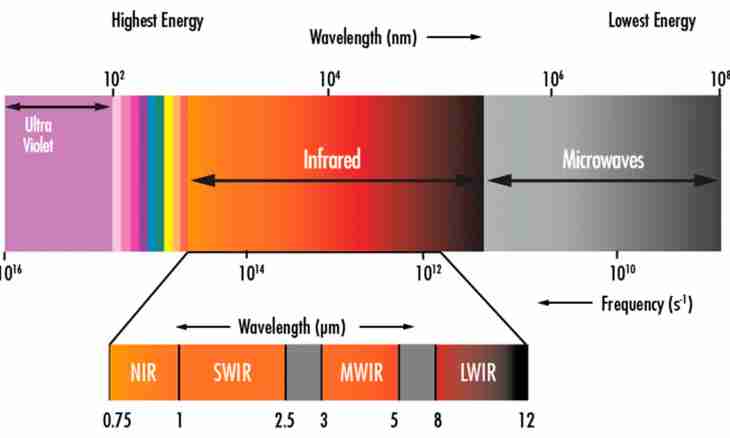The physical term "range" comes from the Latin word spectrum that "vision", or even "ghost" means. But the subject called such gloomy word has a direct bearing on such fine natural phenomenon as a rainbow.
In a broad sense a range is called distribution of values of any given physical quantity. A special case – distribution of values of frequencies of electromagnetic radiation. Light which is perceived by a human eye it is a kind of electromagnetic radiation too, and it has a range.
Opening of a range
The honor of opening of a light spectrum belongs to I. Newton. Starting this research, the scientist pursued the practical aim: to increase quality of lenses for telescopes. The problem was that image edges which could be observed in the telescope were painted in all colors of the rainbow.
I. Newton conducted an experiment: the ray of light which fell on the screen got into the darkened room through a small opening. But on the way it the trihedral glass prism was established. On the screen instead of a white light spot the iridescent strip was designated. White sunlight was difficult, compound.
The scientist complicated experience. He began to make in the screen small openings that through them there passed only one color beam (for example, red), and behind the screen established the second prism and one more screen. It turned out that color beams to which the first prism spread out light do not decay on components, passing through the second prism, they only deviate. Therefore, these light beams are simple, and they refracted in a prism differently, as allowed "to spread out" light to parts.
It became so clear that various colors do not come from different extents of "mixture of light with darkness" as was considered to I. Newton, and are components of the light. This structure was also called a light spectrum.
Spectral analysis
I. Newton's opening was important for the time, it gave a lot of things to light nature research. But the true revolution in science connected with a light spectrum research took place in the middle of the 19th century.
The German scientists R.W. Bunsen and G.R. Kirchhoff studied a spectrum of light radiated by fire to which evaporations of various salts are added. The range varied depending on impurity. It led researchers to a thought that on light ranges it is possible to judge the chemical composition of the Sun and other stars. So the method of the spectral analysis was born.
This opening mattered not only for physics, chemistry and astronomy, but also for philosophy – in an issue of knowledge of the world. At that time many philosophers believed that in the world there are phenomena which are not able to be learned until the end of people. Gave the Sun and stars which can be observed as an example, it is possible to calculate their weight, the size, distance to them, but it is impossible to study their chemical composition. With the advent of the spectral analysis this characteristic of stars stopped being incognizable, so, the idea of unknowability of the world was called into question.

